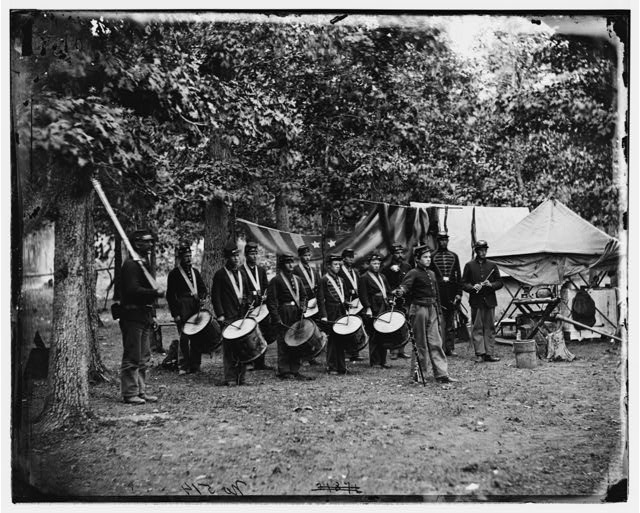History

“Sheepskin Fiddlers and Straw Blowers”
By the close of the American Civil War (1861-1865), “field music”, as played by the fife and drum, had reached its high water mark and then began to recede in its military use. Today, these musical groups are often referred to as the “Ancient” corps, which alludes to those who continue to play the traditional six-hole wooden fifes and rope tension drums.
For centuries, as far back as the Egyptian armies, through the Crusades, and finally in the American Civil War - during which time it reached the height of its proficiency - martial music was an integral part of armies throughout the world. Military fifes and drums in their most recognizable form first appeared in Switzerland in the early 1300s. Fife and drum music then came to America with the British army during colonial times. In European and American armies, the music was also used to entertain the troops as well as helping the men march in an organized fashion. It soon became an increasingly important part of everyday military protocol. The use of the fife and drum to communicate commands in the field as well as regulate the soldiers’ life in camp became its primary function throughout the time period of the Civil War.
The Music of the Fife and Drum Corps had three main roles:
1) Tactical: including signals to march, halt, charge, retreat, march at double time, quick time, wheel and fire, etc.
2) Camp Duty: the calls to regulate the camp routine from reveille and dinner to tattoo and lights out.
3) Ceremonial: used for formal parades, entertainment of troops or dignitaries and funeral rites.
The basic overview of the fife and drum corps of the American Civil War:
- Both Union and Confederate companies (approximately 100 men) had two musicians: 1 drummer and 1 fifer.
- Fifers and drummers played only for their own companies when on detached duty or on a guard service.
- Regimental or battalion levels had a fife and drum corps consisting of 10 fifers and 10 drummers drawn from each company by the Drum Major.
- The Drum Major and Fife Major were noncommissioned officers who were responsible for selecting, training and organizing the corps.
- Field musicians were also used as stretcher bearers as well as aides to the medical staff.
Light artillery and cavalry primarily used buglers for the camp duties and tactical calls as performed by their counterparts in the infantry fife and drum corps. It is estimated that approximately 40,000 musicians served in the ranks of the two armies during the years of the American Civil War, sustaining their share of casualties. As the range and deadly effectiveness of the armaments improved and field communications modernized, the usefulness of traditional field music and musicians rapidly diminished. Today, traditional fife and drum field music is primarily used in parades, ceremonies honoring veterans and “living history” reenactments, encampments and presentations.
- Francis H. Buffum, 14th New Hampshire Volunteers.